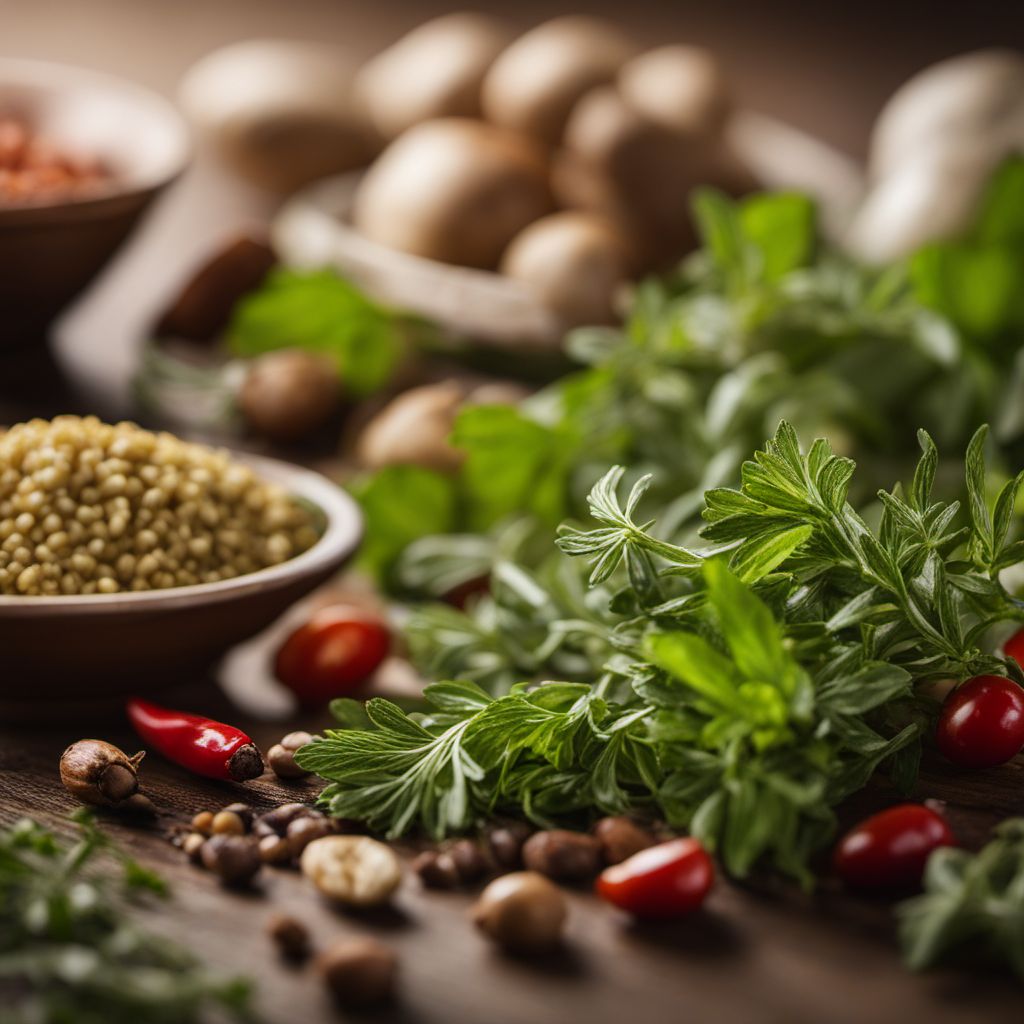
Ingredient
Mixed herbs and spices
The Flavor Symphony: Mixed Herbs and Spices
Mixed herbs and spices are a carefully curated blend of aromatic dried herbs and spices, such as basil, thyme, oregano, rosemary, parsley, sage, marjoram, and various ground spices. This combination offers a harmonious balance of flavors, including herbal, earthy, floral, and warm notes. The texture of the blend can vary depending on the ingredients used, ranging from fine powders to coarse granules.
Origins and history
The use of mixed herbs and spices dates back centuries, with different cultures and cuisines developing their unique blends. These blends are often influenced by regional ingredients and traditional cooking techniques. They are widely used in Mediterranean, Middle Eastern, Indian, and Mexican cuisines, among others. Mixed herbs and spices have become an essential part of global culinary traditions, enhancing the taste and aroma of countless dishes.
Nutritional information
Mixed herbs and spices are low in calories and can provide a range of health benefits due to the presence of various herbs and spices. They are a good source of antioxidants, vitamins, and minerals, depending on the specific blend. However, the nutritional content may vary depending on the proportions and quality of the ingredients used in the blend.
Allergens
There are no known allergens associated with mixed herbs and spices. However, individuals with specific allergies or sensitivities to certain herbs or spices should check the ingredient list for potential allergens.
How to select
When selecting mixed herbs and spices, opt for reputable brands or sources that offer high-quality blends. Look for blends that are free from additives, preservatives, or artificial flavors. Check the expiration date to ensure freshness. Consider the specific flavor profile you desire for your dishes and choose a blend accordingly.
Storage recommendations
To maintain the freshness and flavor of mixed herbs and spices, store them in airtight containers away from heat, light, and moisture. Keep them in a cool, dark pantry or cupboard. Avoid storing them near the stove or other heat sources, as exposure to heat can degrade their quality and potency.
How to produce
Producing mixed herbs and spices requires expertise in selecting, drying, and blending various herbs and spices. It is best left to professional spice blenders or companies specializing in spice blends. However, home cooks can experiment with creating their own blends by combining their favorite dried herbs and spices in different proportions.
Preparation tips
Mixed herbs and spices can be used in a variety of dishes, including soups, stews, sauces, marinades, dressings, and rubs. They are particularly versatile in Mediterranean, Middle Eastern, and Indian cuisines. Sprinkle them over roasted vegetables, grilled meats, or pasta dishes for an extra burst of flavor. Experiment with different proportions to customize the blend to your taste preferences.
Culinary uses
Mixed herbs and spices are widely used in various cuisines around the world. They are a staple in Mediterranean dishes, such as pasta sauces, roasted vegetables, and grilled meats. In Middle Eastern cuisine, they are used in spice blends like za'atar and ras el hanout. Indian cuisine incorporates mixed herbs and spices in curries, rice dishes, and marinades. Mexican cuisine utilizes blends like chili powder and taco seasoning for salsas, tacos, and enchiladas.
Availability
Mixed herbs and spices are commonly available in grocery stores, supermarkets, and specialty spice shops worldwide. They are also widely available online, making them accessible to home cooks and professional chefs globally.
More ingredients from this category

Pickling spice
"The Flavorful Blend: Unveiling the Secrets of Pickling Spice"

Indian spice mixes and similar (other than curry powder)
Aromatic Blends: Unveiling the Vibrant World of Indian Spice Mixes

Bouquet garni
The Fragrant Herb Bundle: Unlocking the Aromas of Bouquet Garni

Curry powder
The Magic Blend: Unveiling the Secrets of Curry Powder
Recipes using Mixed herbs and spices » Browse all

Scottish-inspired Kamameshi with Smoked Salmon and Whisky
Whisky-infused Scottish Kamameshi: A Smoky Twist on a Japanese Classic
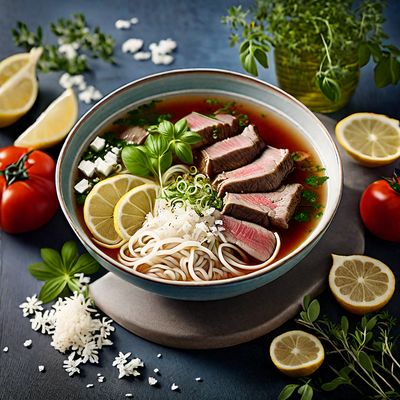
Greek-style Pho
Mediterranean Pho Delight

Ethiopian Spiced Collard Greens with Beef (Gomen be Siga)
Siga Gomen: A Flavorful Ethiopian Delight

Farinheira Occitane
Savory Occitan Sausage with a Portuguese Twist

Roasted Breadfruit with Fried Jackfish - A Belizean Delight
Tropical Fusion: Belizean Roasted Breadfruit with Crispy Fried Jackfish

Awaze Fusion Sauce
Spicy Fusion Delight: Awaze Sauce with a Twist
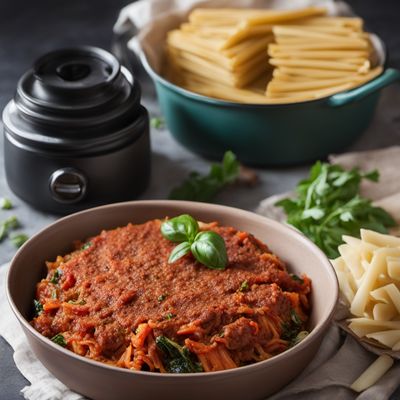
Eritrean-style Timballo
Spiced Delight: Eritrean-style Timballo
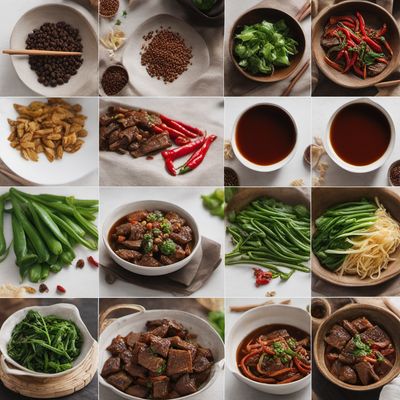
Yunnan-style Beef and Potato Stir-Fry
Yunnan Delight: Fragrant Beef and Potato Stir-Fry

Vietnamese-style Samosa
Vietnamese-inspired Crispy Samosa Delight
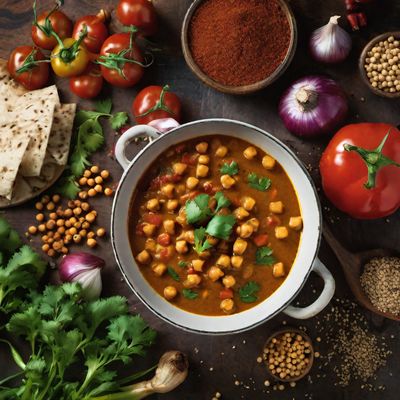
Vegetarian Curry Recipe
Savory and Spicy Vegetable Curry
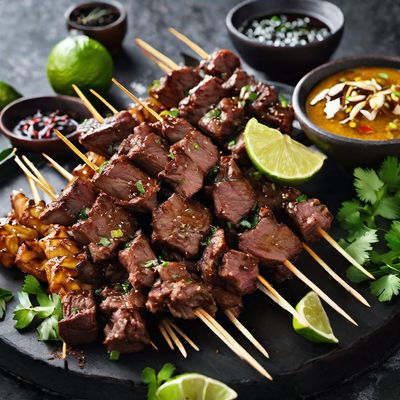
Haute Cuisine Satay
Elevated Indonesian Satay with a Haute Twist
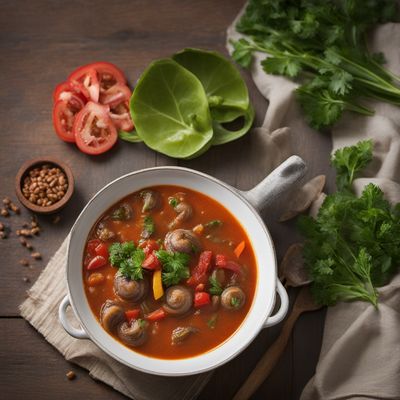
Louisiana Creole Snail Soup
Bayou Delight: Louisiana Creole Snail Soup